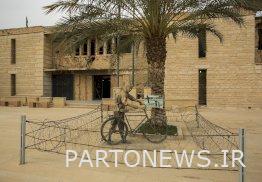The position of the remaining monuments from the Holy Defense period in the International Council of Monuments and Sites

ICOMOS is the educational, scientific and cultural organization of the United Nations (UNESCO) which was established in Venice, Italy in 1964 in line with its cultural duties and protection of cultural heritage, and published one of the most important international documents for the protection of cultural heritage named ” The “Venice Charter” led to the formation of a non-governmental organization called the “International Council on Monuments and Sites” (ICOMOS) for short.
In 2018, ICOMOS had 10,546 members in 151 countries, 271 staff members, 107 national committees and 28 international scientific committees, thus creating a wide international network consisting of experts in various fields related to the protection of cultural heritage.
Currently, there are 29 international scientific committees in ICOMOS, including the Committee on Conservation Economics (ISCEC), the Committee on Risk Preparedness (ICORP), the Committee on Education (CIF), the Committee on Cultural Routes (CIIC), the Committee on Religious Sites and Ritual (PRERICO), Cultural Landscapes (ICOMOS-IFLA), Underwater Cultural Heritage (ICUCH), Intangible Cultural Heritage (ICICH), 20th Century Heritage (ISC20CH), Qutb Heritage (IPHC), Glen Architectural Heritage (ISCEAH) and Military Heritage and Fortifications Committee (ICOFORT) pointed out.
The International Scientific Committee on Fortifications and Military Heritage (International Scientific Committee on Fortifications and Military Heritage) was formed due to the importance of military heritage in human history. The committee stated that the defense fortifications and other related heritages that have survived from the distant past till today have a deep connection with history.
The introduction of this charter emphasizes the importance of calculating tangible and intangible values related to examples of military heritage and protecting them as a part of social identity and human history.
According to what has been said, everything from the war weapons and the remains of the war in museums, as well as the old textures of the city, the castles and the fences of the old cities, and everything related to the war in general, can be seen under the attention of the Eckfort Committee.
In the meantime, Iran has been involved in an imposed war for eight years, and today, with the past of more than three decades, we witness the preservation of some of the tangible and intangible works left from that era, which according to the Eckfort Committee of the ICOMOS charter, have values They are a heritage for humanity.
In the meantime, Khuzestan province, due to the main focus of the Iran-Iraq war, has a larger share of these evidences, and based on that, the cultural heritage, tourism and handicrafts of this province have been nationally registered by identifying some valuable remains of that era, and currently 40 of them Duran has been registered nationally, which has the most nationally registered works of this field in the country, this province.
The registered works include operational monuments, urban monuments, some remaining evidences on the walls, and the place of events. Visit statistics show that the number of visits to these works has been greatly welcomed by national and international tourists over the past years, and of course, it requires a mechanism to protect this The works should be followed more seriously.
The issue of protecting the remains of contemporary wars is an important issue in the world today, and we can find a lot of evidence of the preservation of these works even from the First and Second World Wars in different countries, including Japan, Russia, Germany, France, America and China. He observed that a special investment has been made in order to protect them.

